Goats are a wonderful addition to a homestead or small farm. If you want to keep something a little larger than a chicken but not as expensive as a cow, goats are a great option. They are useful for clearing brush and managing land, produce delicious, rich milk that can be used for cheese, and their meat is healthy and low in fat.
Raising goats for milk, meat, or companionship is simple, but you need to be well prepared. Fence off a secure area for them and provide a three-sided shelter and a constant supply of fresh water.
Goats browse and forage and eat hay and goat pellets. Female goats must be bred to produce milk.
If you are keeping goats for milk, you will definitely have a few sweet little goat kids running around each year. Does give birth to at least one kid per year.
This article covers the ins and outs of raising goats and everything you will need to prepare for starting your own goat herd. Learn about which goat breeds are best for meat and for milk and how to go about buying goats.
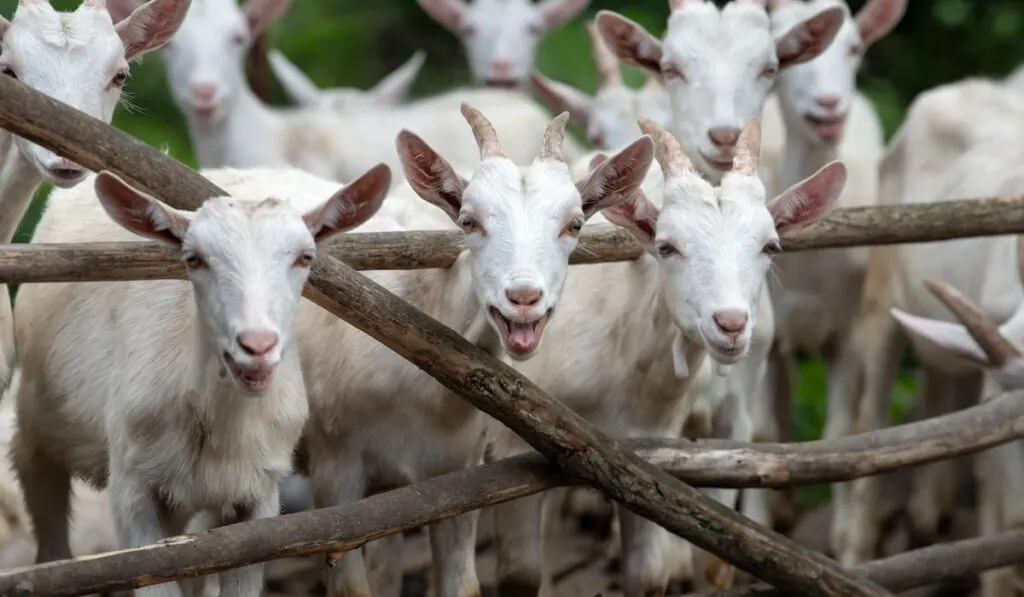
Table of Contents
Benefits of Raising and Keeping Goats
Playful and inquisitive, goats are an absolute joy to keep. They can be mischievous and are master escape artists, but are certainly worth keeping. There are loads of benefits to raising and keeping goats:
- Easy to raise and care for.
- Charming personalities.
- Entertaining to observe.
- Goats make sweet, loving pets.
- Useful on small farms and homesteads – can be used for brush clearing.
- Dairy goats and Nigerian Dwarf goats produce rich, creamy milk.
- Goats can be raised for meat. Their meat is lean, tasty, and best of all, farm-fresh.
- Certain goat breeds, like Angora and Cashmere, are kept for their silky soft fiber.
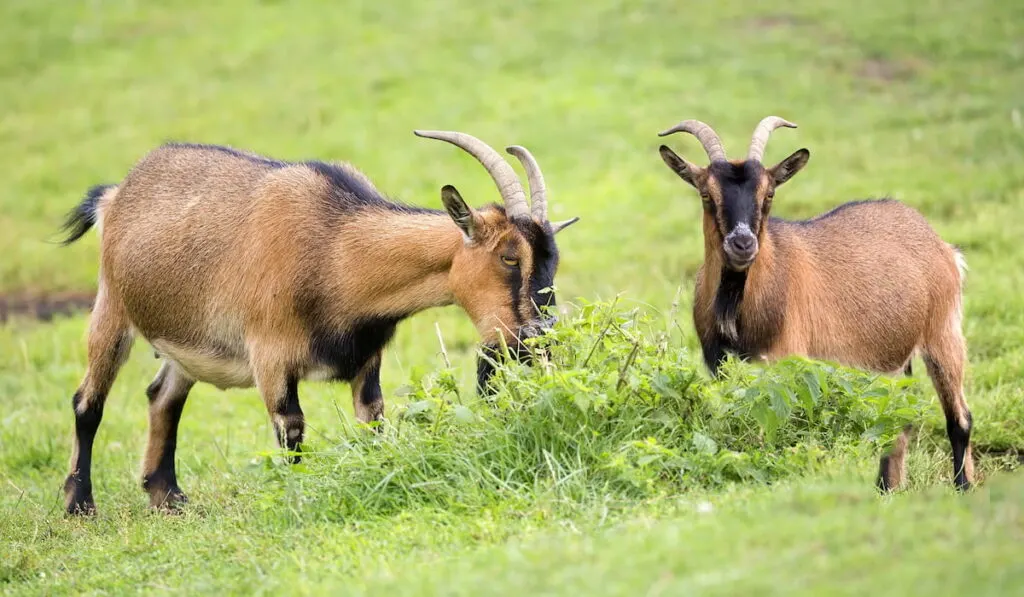
How to Prepare for Getting Goats
Getting goats is a big step. You need to be prepared financially and make sure you have the time, equipment, and resources to raise them and take care of them properly. Think about why you want to keep goats, how many you can keep, and which breed would be best for you.
If you have been thinking of starting your own herd for a long time, start preparing the following things so that you can get some goats!
- Goat housing. They need a dry, draft-free shelter. In terms of size, each goat requires about 10 square feet of space. A simple three-sided structure is perfect in warmer places, but in colder climates, a shed or barn is better. They need bedding like wood shavings or hay.
- Secure fencing. Goats are notorious for being masters of escape. If a cat is able to squeeze through a gap in the fence, so can a determined goat. Ensure that you have a securely fenced pasture to keep your goats in.
- Feed and feeding equipment – storage containers for feed, feed buckets, a hay manger, water trough, and a mineral block or loose minerals.
- Strong structures for goats to climb. Goats love to clamber onto things. Provide them with raised platforms and objects to play on.
- Safe forage and browsing. Remove poisonous vegetation like rhododendrons or azaleas from their pasture.
- First aid kit for common health issues.
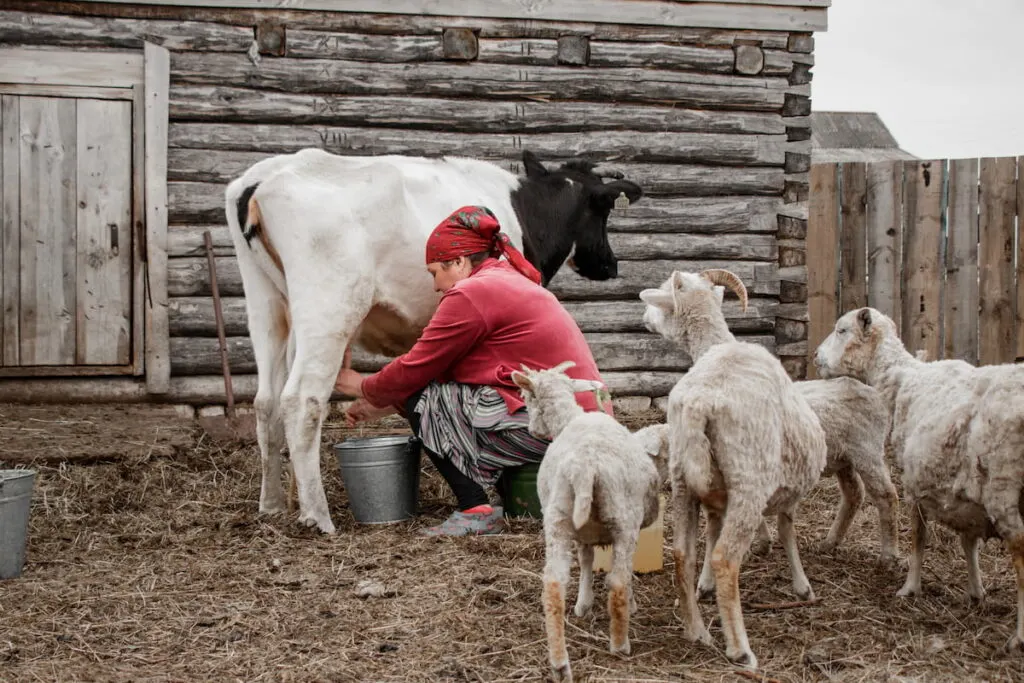
Raising Goats for Milk or Meat
Before you get goats, ask yourself why you want to keep them. Do you want to raise a pair of goats from when they are kids and raise them as dairy goats, or do you want to raise a small herd of meat goats? Do you want to produce meat and milk for you and your family, or would you like to sell your dairy products?
Your answers will determine which goat breeds you should consider and how many goats you should start off with for your herd.
Choosing a Goat Breed
Anglo-Nubian, Alpine, La Mancha, Oberhalsi, Sable Saanen, and Toggenburg are the best dairy breeds. Nigerian Dwarf goats are the only miniature dairy breed. Along with Pygmy goats, they are the best breeds to keep as pets.
Angora, Nigora, Pygora, and Cashmere are breeds that are kept for their fiber. Popular meat breeds are Spanish, Savanna, Boer, and Kiko. Fantastic dual-purpose breeds are Kinder and Verata goats.
How Many Goats to Start With?
Goats are very social animals. It is always best to raise two goats together. On their own, they get lonely and vocal. Get two from the same herd so that they are accustomed to each other’s company.
Be wary of getting overexcited and getting three, four, or even five goats from the get-go. The expenses, space, time, and resources required to keep a small herd can be steep! Goats breed quickly, and your herd will grow in a matter of a year or two.
How Much Does a Goat Cost?
Depending on their breed, age, sex, and if they are castrated or not, goats range from a few dollars to hundreds of dollars. Generally, good quality goats cost in the range of $100 to $800.
Females are more expensive than males, and pedigree goats cost more than mixed breeds. Registered goats are pricier than unregistered ones.
Male goats that are castrated (wethers) are widely available and are very cheap. They are sometimes even given away for free. These make great pets and can be used for clearing brush and weeds.
Mixed breed adult male and female goats cost between $300 and $400. Mixed breed babies (males and females) cost $25 to $200.
If you are looking for milking goats, definitely choose ones that come from high-quality bloodlines. Baby milking goats (does) cost $200-$500 each.

Questions to Ask Goat Breeders
Once you know how many goats and which breed you want to buy, it is time to start looking around for goat breeders. Check online for local goat farms that sell registered goats from quality stock. Avoid buying random goats at barn sales as they often have health issues.
Do not be shy to get as much information as possible. You need to be sure you are buying healthy goats from a reputable breeder. Decent goat breeders will have no problem answering the following questions:
- How much milk do you get from the goats?
- Is the milk tested? Or pasteurized?
- Are the goats vaccinated, and for what?
- Have you registered the goats, and at which registry?
- How often do you test for diseases in your goats, like Paratuberculosis (Johne’s disease), Caprine arthritis encephalitis (CAE), and Caseous Lymphadenitis (CL)?
- Has the goat herd experienced any health issues, or have there been any deaths from unknown diseases or causes?
- Are the kids bottle-fed or dam-raised (raised by the mother)?
- Are the goats polled or disbudded?
How Much Space Do Goats Need?
Contrary to very strange popular belief, goats are not generally well-adapted to apartment living, even though they love being high up off the ground.
Goats need at least 250 square feet of space each (at least 500 square feet, as you should always keep at least a pair of goats), a shelter that will keep them dry and out of the wind, and some shade for hot, sunny days.
A simple three-sided structure is perfectly sufficient in warm climates.
In an area with icy, snowy winters, it is better to house goats in a shed or a barn overnight.
Their shelter needs to be large enough for each goat to have about 10 square feet of space. If you are keeping goats in your backyard, you need to ensure that your yard is securely fenced. The fence needs to be at least 5 feet high to prevent them from jumping out.
Fence off areas within your yard as “pastures” and rotate the goats between these regularly. Woven wire fences work very well. Electric fences are a solution when you have goats that constantly try to escape.
It is useful to have a small isolation pen to help manage the goats more easily. This is where you can put goats when you need to call the veterinarian out, clip their hooves, harvest their hair, or milk them.
Feeding Goats
Goats eat a wide variety of things, from nibbling on hay to grazing pasture grass and browsing on woody shrubs and small trees. Free-feed alfalfa hay to your goats in a manger, providing as much as they want (up to 4 pounds) even if they have access to pasture.
Goats should be rotated between pastures often so that they do not graze them too intensively. Keeping them in one area can damage the vegetation and soil, and it can cause parasites to build up.
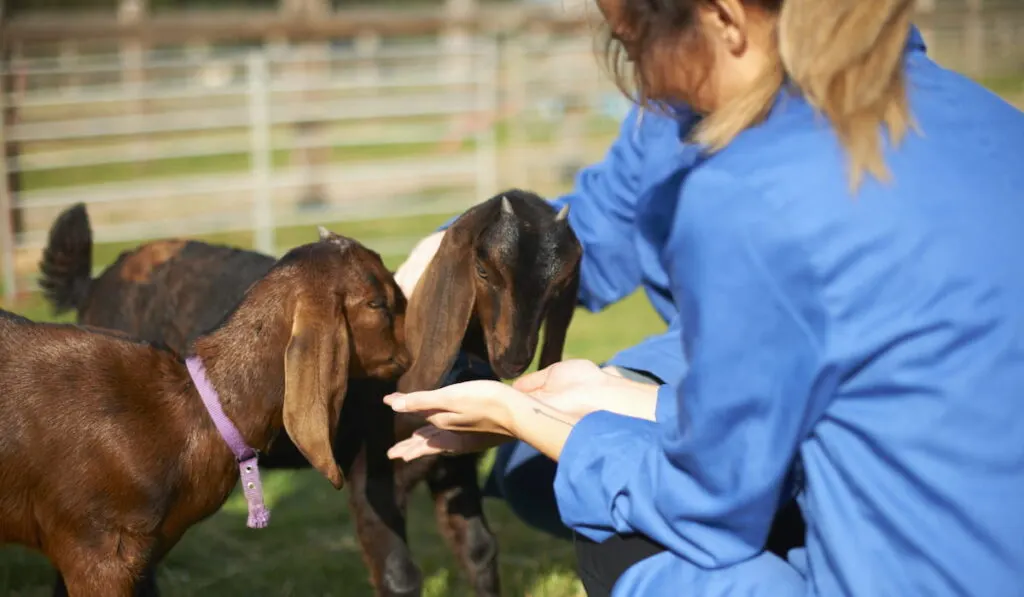
Keeping Dairy Goats
If you keep goats for their milk, it is easiest to have a herd of 2 or 3 does. Buy them as kids and hand-rear them so that they are very friendly and tame around you. It will be much easier to milk them.
The does will need to be mated once a year in the fall in order to keep producing milk. When the time comes, rent a buck for a week or two to get the job done.
Billy goats are quite unpleasant creatures to have around the yard. They have a repulsive odor because they urinate all over themselves. They are also hyped up on testosterone and insist on headbutting everything that moves.
Bucks must be kept separate from does and kids, as they will go as far as killing babies.
Male goats are far easier to keep if they are castrated. They are then called wethers instead of billy goats and can live harmoniously with does and kids.
There are many useful jobs for wethers to do on a homestead. You can use them to manage invasive vegetation and weeds. They can also be raised as meat goats.
Inevitably, if you keep dairy goats, you will have a few cute little kids each spring. You can sell them, raise them for meat, or grow your herd.
Caring for Baby Goats
Like adults, baby goats need a warm, dry shelter from the wind (potentially a shed, stable, or in a barn) and require soft, clean bedding. Pine shavings or straw works well.
If possible, goat kids should stay with their mother from birth and be kept separate from the herd for the first 4 weeks. The kids grow strong and healthy from their mothers’ nutritious colostrum, which they produce for the first week or so.
Do you want to dam-rear or bottle-rear your goat kids? Bottle feeding goats, as adorable as it sounds, is hard work and requires a lot of dedication.
For the first month, they need feeding four times every day and then three times a day until you fully wean them at two months of age.
At a month old, they can start feeding on solid food.
If you let their mother do all the work raising them, you must handle and interact with them often on a daily basis. This will help them bond with you, and they will be much easier to manage as they grow up.
Health Issues in Goats
Be hands-on with your goats, observe them and touch them often so that you can get a feel for their bodies and quickly detect any parasites or health issues.
If a goat in your herd stays lying down or isolates from the herd, not eating, drinking, or urinating, there may be a problem. Other signs of illness are udders that are hot to the touch, pale gums and eyelids, and mucous coming from the eyes and nose.
When you spot any of these symptoms, isolate the goat in a sick pen, and call the vet immediately to come and check on the goat. It is crucial to act quickly, as you want to prevent the disease from spreading to other herd members.
Common health issues and diseases in goats are:
- Liver fluke disease
- Gastrointestinal nematodiasis
- Coccidiosis
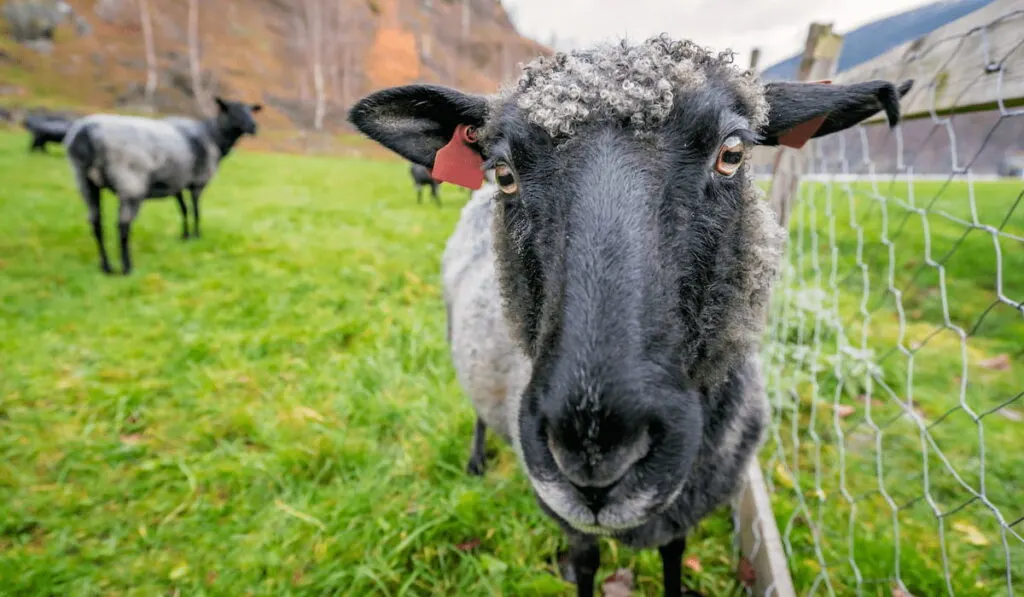
Conclusion
Raising goats for milk, meat, or just as pets is fun, rewarding, and easy, as long as you are well prepared to take care of them. Goats need quite a bit of space – about 250 square feet each – but should never be kept alone.
They need a shelter, a water trough, access to some pasture, and a manger kept full of alfalfa hay. Goats are not grazers, like cows and sheep. They are browsers and eat shrubs and small trees. Goats can be used to clear overgrown land!
If you keep goats for milk, you will have some baby goats, or kids, every year! It is better to keep a small herd of does and rent a buck when you need to have them mated. Keeping a billy goat is not pleasant. They are stinky, aggressive creatures.
Male goats should be castrated if they are to be kept and raised as meat goats. This improves the flavor of the meat and makes them way easier to manage.
Goats are susceptible to diseases like contagious ecthyma, paratuberculosis, and caprine arthritis and encephalitis. Check that they are vaccinated and registered when you buy them to ensure you buy healthy goats. Regularly check on your herd and monitor their wellbeing.
Resources
- https://my.passionposts.com/cloe/ – /my-tasks/63/
- https://www.treehugger.com/raise-and-care-baby-goat-kids-3016479
- https://www.treehugger.com/how-to-raise-goats-3016858
- https://modernfarmer.com/2016/05/lessons-from-raising-goats/
- https://www.grit.com/animals/livestock/goats/raising-goats-for-beginners-6-things-to-know-before-you-get-goats-zb0z1906/
- https://www.dummies.com/home-garden/hobby-farming/raising-goats/raising-goats-for-dummies-cheat-sheet/
